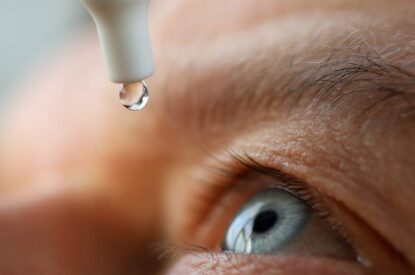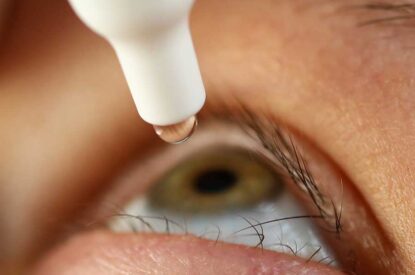How to Use Eye Drops
Eye drops for glaucoma contain medications. Bottle shapes and sizes vary as do the type of containers. Most commercially made eye drops deliver a drop that is bigger than the eye can hold. Because of this, it is normal for a small proportion of the drop to roll over onto your cheek.
Also, different bottle types may last varying amounts of time as each may have a distinctive eye drop size.It is difficult to squeeze just one drop from a bottle at a time. It is therefore normal for a bottle not to last as long as your pharmacy provider may think it should.
There are two issues with getting the eye drop where you want it: inside the eyeball. The first is getting the drop from the container onto the surface of the eye. The second issue is getting the drop from the surface of the eye to the inside of the eye where it will work to lower the eye pressure.
Precautions When Using Eye Drops
Eye drops can be challenging to instill. Here are some tips you may find helpful.
- Before instilling drops, make sure to wash your hands. Dirty hands can result in eye infections which may be serious.
- Often, when beginning to use drops, it is hard to tell if the drop actually went in the eye or not. You might want to refrigerate your eye drop bottle – when you put the drop in, you will feel the cold drop on your eye and know that you are successful (this is not necessary to preserve the drop, but useful to help you discover if the drop actually touches your eye).
- Almost 20% of people are unable to put drops onto their own eyes for various reasons and are reliant upon others. They may have tremors, poor vision, poor coordination, or just fear. Don’t feel badly if this is you. Depending upon your situation, make sure you find a friend or family member to help you.
- If your doctor has prescribed more than one type of eye drop, wait five minutes before putting the next drop in your eye.
Best Practice for Using Eye Drops
Step 1: Lie down flat
You will increase the chances that a single drop hits the eye if you lie down flat with your face up.
Step 2: Just one drop!
Only one drop is needed, not two, even if the bottle says, “one drop or two.” Gently pull your lower lid down to increase the amount of eyeball showing, bring the bottle about an inch above the eye surface (hold the bottle as vertical as possible), then gently squeeze the bottle until you see or feel the drop hit. Be careful not to touch the bottle to your eye as this can transfer bacteria to the bottle tip.
Step 3: Close your eyes for 2-3 minutes
To maximize effectiveness and minimize systemic side effects, use the 3-minute eyelid closure technique combined with closure of the tear drainage system. Once the drop is on the eye, do not blink your eye or move it around to spread the drop. Instead, gently close your eyes just once, place the pad of your most sensitive finger at the inside corner of the eyelid by the nose and press gently.
Leave the eyelids closed and the finger pressing gently for 2-3 minutes. Studies have shown that it takes at least 2 full minutes for the drop to completely penetrate the surface of the eye to get inside.
Step 4: After three minutes, the drop is fully absorbed into the eye.
If your doctor has prescribed more than one type of eye drop, wait five minutes before putting the next drop in your eye.
Video: How to Apply Eye Drops
Learn More


